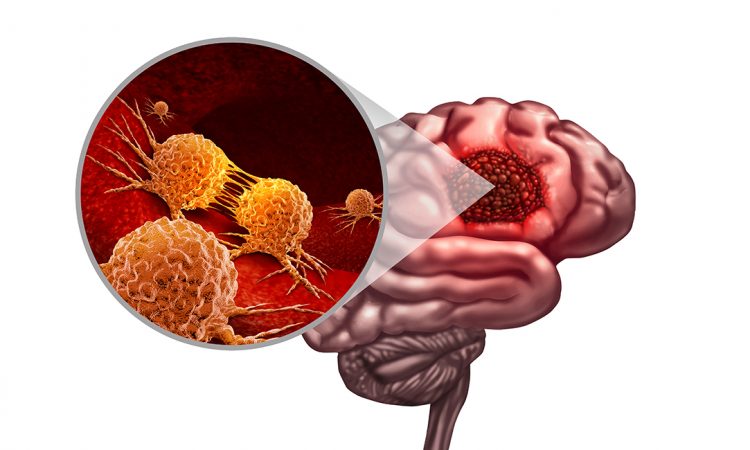
We often talk about the brain associated with intelligence or the way a person thinks. The brain is a vital organ in humans that we all can agree that without a functioning brain, what is even a human is or capable of being alive. If you ask a doctor, you would know there is a condition known as glioma that is one of the many conditions linked to the brain. We will learn more about glioma throughout this article.
Glioma is a brain tumour that originated from the abnormal glial cells. Glial cells are cells that provide chemical and physical support for the brain tissues to perform many functions in the brain such as regulating messages between the brain cells, supporting the neurons and providing insulation. As a matter of fact, glial cells are the most abundant cells in the central nervous cells. There are four subtypes of gliomas which are astrocytoma, glioblastoma, ependymoma and oligodendroglioma. Hence, this explains why glioma is the common primary brain tumour as it accounts for 78% cases consisting of the four subtypes altogether. Gliomas are also classified based on molecular and genetic markers with the recent technologies. When it is based on molecular and genetic markers, it is classified in grade I to IV. The World Health Organization (WHO) often uses a grading system focusing on molecular markers.
Gliomas can develop at any age but the average age itself of each subtype gliomas do depend on its subtypes. Astrocytoma based on grade, grade I is common in children and teenagers, grade II is common in adults aged between 20 to 40 years old, grade III is common in adults aged 30 to 50 and grade IV is common in aged 50 to 80. Grade IV astrocytoma is often known as glioblastoma and it is the most aggressive type of tumour in the nervous system. Ependymoma is common in children under the age of 5. Oligodendroglioma is considered the rarest one among all of the subtypes.
It is not fully understood how glioma occurs but the most believed causes are ionising radiation and genetic changes. Genetic changes to the glial stem cells often is the cause for the uncontrolled growth. Most often is known as mutated genes such as TP53, PTEN, ATRX, TERT, BRAF and IDH. Ironically, most gliomas are sporadic tumours without known risk factors. The only established risk factors are ionising radiation such as survivors in atomic bombs and genetic changes that run in families or are inherited.
Glioma symptoms can be generalised or specific to the location where the tumour is. Common symptoms include headache, seizure, nausea, vomiting, blurred vision, changes in personality, imbalance, mood disturbances and fatigue. Due to the fact that the location of the glioma may be also causing specific symptoms, focal neurological deficits can be expected such as loss of coordination, loss control over finer motor control, specific body part affected such as numbness, weakness or involuntary movement, loss of peripheral vision, focal seizure characterised by shaking movement of one of the limbs, aphasia which is sudden problem of speaking or understanding speech and abnormal taste or smell sensations. It is believed that headache is the common initial symptom in most patients with glioma. This is because of the tumour growth that displaces the brain tissue causing a mass effect.
Treatment for gliomas often started with surgery to remove the tumour as much as possible. Complete removal is impossible if the tumour is located in inaccessible areas or critical sites. Chemotherapy and/or radiotherapy are often followed after surgery to remove the remaining tumour. Common chemotherapy for gliomas includes lomustine and temozolomide. Apart from the main treatment, medication to address symptoms are usually prescribed to alleviate symptoms associated. This includes anti-epileptic, anticoagulation and steroids such as dexamethasone. Some patient may be encouraged to go for rehabilitation after surgery. Palliative care is often provided for severe cases such as high-grade glioma where symptoms get worse and antitumor treatment to be ineffective. One thing certain, patients have to always attend their regular follow-up, taking medications on time and to be active when possible on top of practising healthy eating habits. This is important to ensure patient are not only survive but survive with the best quality of life as possible.
One of the common questions asked by patients is the possibility for the gliomas to be cured. Unfortunately, there is no cure for gliomas as it is yet to be identified. Despite this, the outcome for gliomas varies greatly according to its subtypes. In general, gliomas in young people with low grade or slow growing ones have the highest chance of survival such as grade I and II gliomas as they live for years or decades without worsening. It is worth noting that even low-grade gliomas can still grow into malignant ones despite them growing or progressive slowly. Long-term survival with glioblastoma is rare as it is considered as a terminal illness with expected survival age of around 14 months with only 5% patient to survive more than five years.




